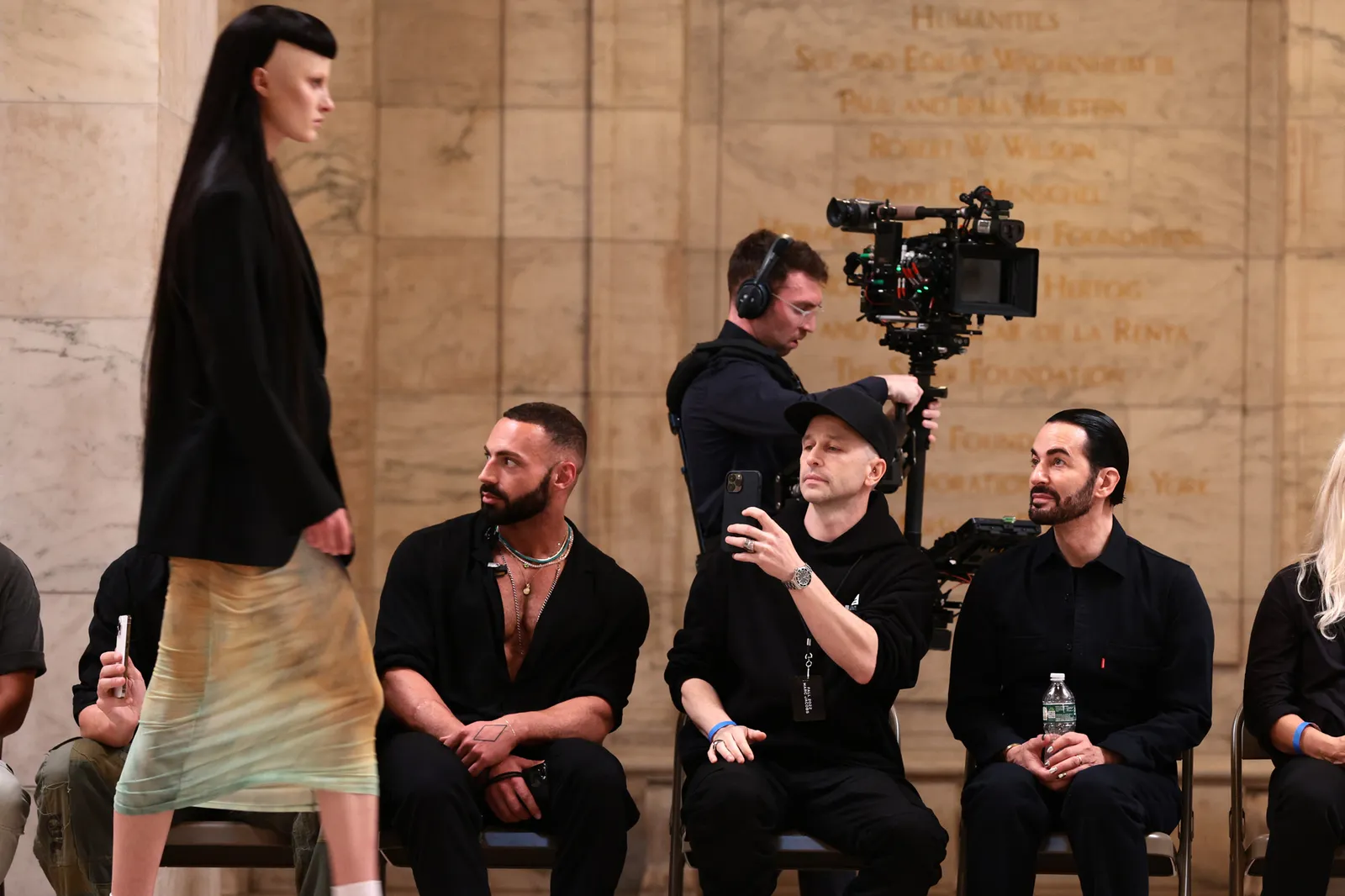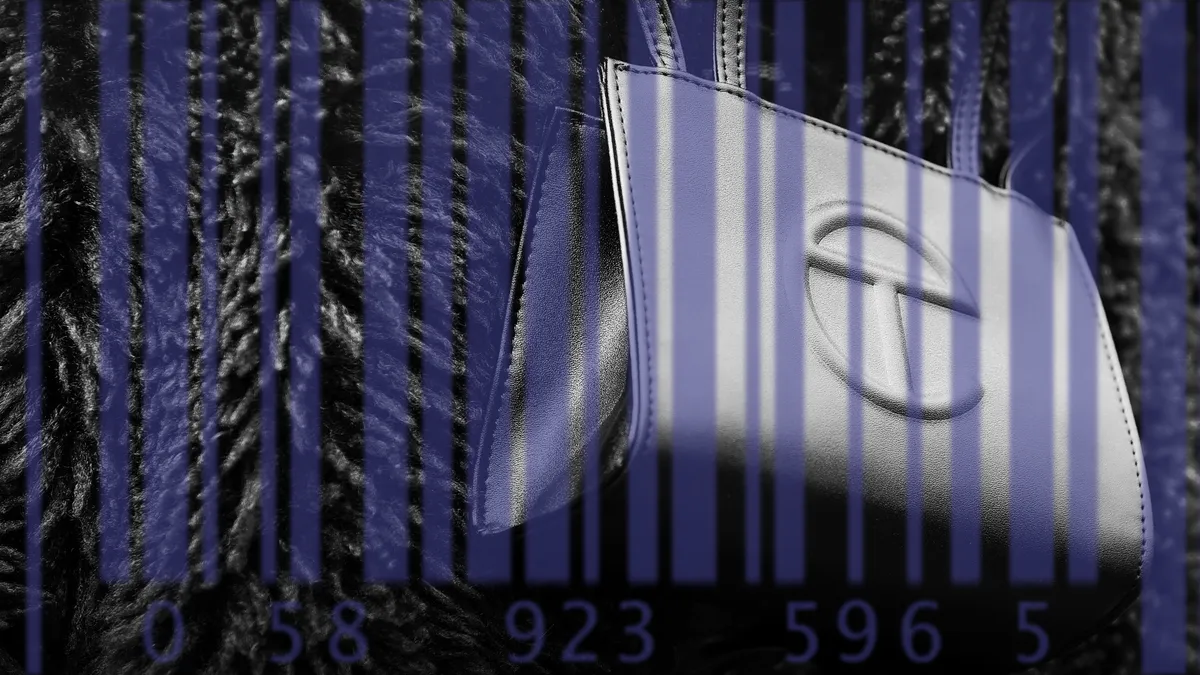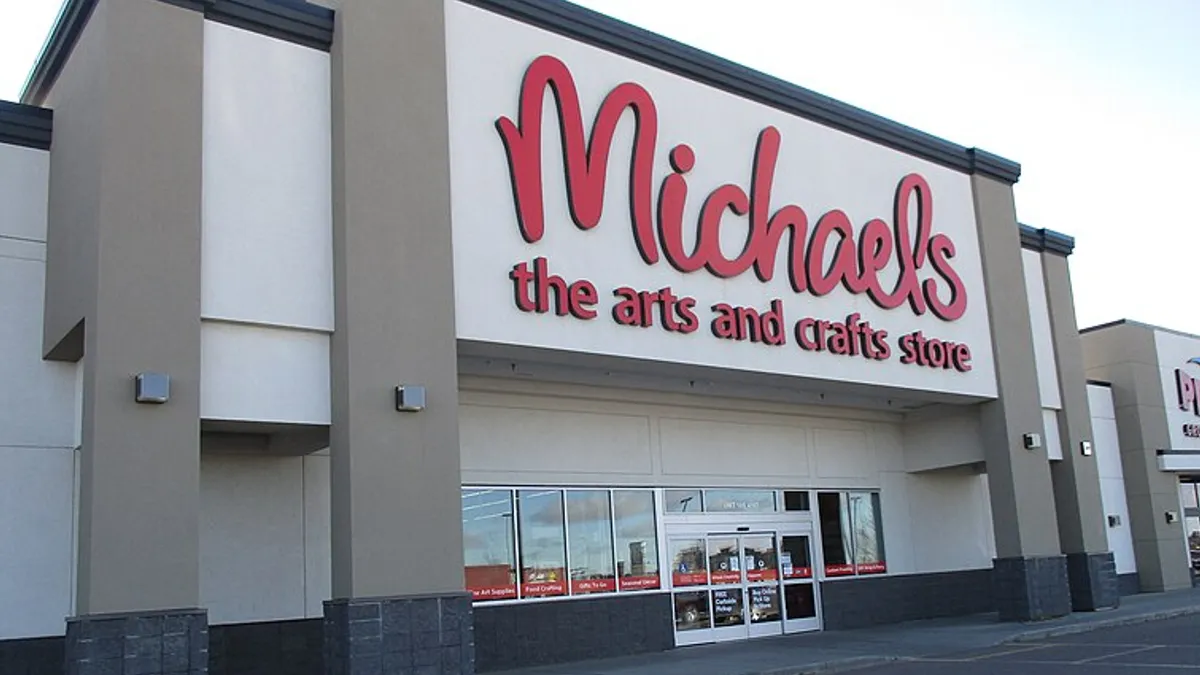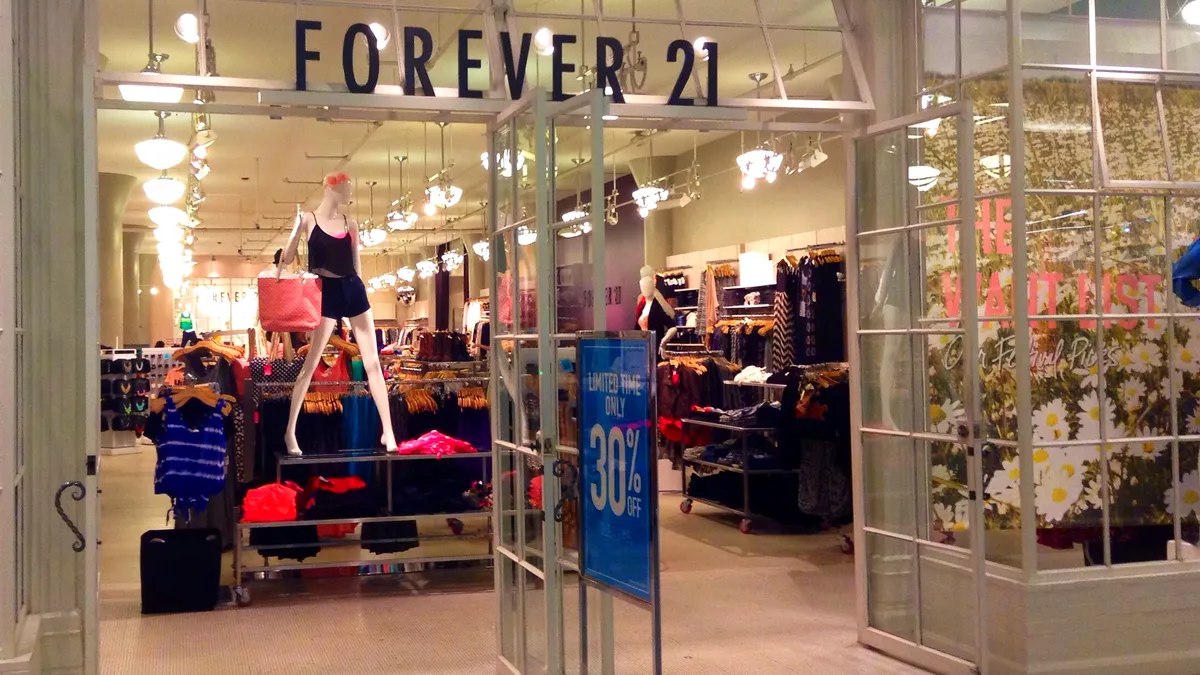Editor’s note: Kaarin Vembar is obsessed with the luxury and apparel markets. She also has a sassy mouth so her managing editor decided to give her a column in an attempt to harness insight for readers. Kaarin can be reached at [email protected]
It’s no secret that fashion is going through a period of drastic change.
Runway shows aren't necessarily needed in order to gain traction as a brand. And a trend’s genesis can be traced back to TikTok or Instagram as readily as fashion week. Magazines, which once told us what was in and what was out, have receded to the point that the monthly print fashion magazine doesn’t even exist anymore.
Moreover, how people shop is in flux. Department stores still exist, but those that sell luxury or conceptual apparel are fewer in number. Shoppers can buy directly from a label, either online or in person, while the pandemic taught us that a company doesn’t need a brick-and-mortar store in every major city to have an impact. Customers are much more open to product drops, to purchasing things secondhand and to buying things through social media channels, which are rapidly evolving to accommodate e-commerce.
While consumers are changing shopping habits, some brands are rising to the occasion to meet people where they are. That, in turn, is pushing creative thinking when it comes to business models.
Whether it is Telfar creating a Bag Security Program, Tommy Hilfiger investing simultaneously in the metaverse and runway or Marc Jacobs seeing success by limiting scope, here are three designers who are approaching the business of retail in ways that push boundaries.
1. Telfar
While many labels are still trying to figure out how to deliver product drops without making half of its fanbase want to set things on fire (looking at you SNKRS app), Telfar has a counterintuitive approach: Give everyone everything they want.
Telfar Clemens became the hottest name in fashion a number of years ago with the release of his vegan leather bag, which went on to become known as the ‘Bushwick Birkin.’
With their practical-yet-fashionable design and affordable price point, Telfar products consistently sell out. The designer is very clear with his label’s purpose of “not for you — for everyone” and has come up with inventive ways to make his products accessible. Especially during a time where people (and bots) like to immediately buy up products only to flip them on secondary markets.
The company is using Telfar TV as one tactic to combat that. The designer announced the launch of the label’s 24-hour, live network during New York Fashion Week in the fall of 2021. “Basically we launched a TV Channel without any content — because we are tired of being content for other channels,” the company explained. Fans are further encouraged to send in their own videos so they can be featured on the channel while maintaining ownership of their work.
“We are not about hype and scarcity. We didn’t set out to make [it] impossible to get product."

Telfar
Telfar TV features “drips” which are targeted product drops. At random intervals the brand will flash a QR code on screen for one minute. Viewers can scan it with their phone to order products. “A drip is less bags than a drop — but your chances of getting one is higher,” the company explained.
Telfar also launched its wildly popular Bag Security Program in 2020. The effort allows shoppers to order as many items as they want in any color which will then be made and delivered within a few months.
At the time of the announcement a statement on the company’s website said, “We are not about hype and scarcity. We didn’t set out to make [it] impossible to get product … But the truth is (with or without the bots and resellers) when thousands of bags sell per second we can’t even know how many to make.”
Ordering through the program requires shoppers to pay all costs upfront. That in turn means the designer can fully fund the initiative and have an idea of supply chain needs.
The fourth iteration of the program was introduced this past April and ran for 36 hours. Shoppers could purchase any shopping bag, in any size and color with no limits. (Ok with some limits. It didn’t include circle or duffle bags or the brand’s collaborations, but everything else was fair game.) Shipment was guaranteed between July 15 and October 31 of this year.
An update to the latest Bag Security Program was emailed to shoppers in early June, and stated that the company was ahead of schedule. It also said to its eager recipients “please don’t ask us when! It’s coming” and preemptively answered the question of why one person would get their order before another with the quip, “God has a plan.”

2. Tommy Hilfiger
Tommy Hilfiger is going back to New York Fashion Week.
After three years, the company will attend the trade show via an “experiential runway event” that aims to deliver an experience that is both in the physical and digital worlds.
This September, the company will present an in-real-life showcase in Brooklyn and simultaneously deliver a metaverse experience centering on its Fall 2022 collection.
The company will also have what it’s dubbing an “industry first” with a see now, buy now option. The runway show will be livestreamed into Roblox and feature avatars dressed in the designer’s collection. Those avatars will “take over the remixed virtual city of New York,” according to the company.
At the same time as the debut of the collection, select Tommy Hilfiger stores will see new retail concepts and “takeovers with key wholesale and pure player partners worldwide will complement the phygital showcase,” according to a company announcement. That’s a lot of words that don’t really come around to say what is happening. But, in general it sounds like this concept isn’t going to just start and end in Brooklyn and Roblox. Instead, a larger vibe is coming to its physical stores, on the catwalk and digitally.
What is unique about Tommy Hilfiger as a brand isn’t necessarily its entrance into the metaverse. Many companies are attempting to figure out how to interact with a concept that very few people understand. The metaverse is expected to generate up to $5 trillion in impact in the next eight years, which gives businesses an incentive to at least look into this meta-thing that may generate a bunch of money. (Besides, what ever stopped any company from coming up with a product, branding it and encouraging people to buy it without really stopping to understand what it is? It’s practically the American Dream.)
Tommy Hilfiger began a partnership with Roblox last year, then expanded that tie-up earlier this summer. The company launched Tommy Play, a virtual space to launch products, offer unique experiences and develop community, and plans to make more announcements in the coming months regarding digital and gaming experimentation.
“We’re excited to meet Roblox users in engaging ways that we can’t do with traditional social platforms,” Tommy Hilfiger said in a statement. “Together with Roblox we’re continuing to build this world as we live in it, watching it come to life, and co-creating for the next iteration to come.”
Is Hilfiger throwing metaphorical spaghetti against the metaverse wall? Who knows. But at least both the designer and the company are taking chances.
What makes Tommy Hilfiger interesting is that it is going full force into something digital while maintaining a traditional presence and staying close to its apparel roots. The company is still designing clothes that look like its brand — it hasn’t strayed far from what works. And it seems to be paying off. A recent report said that Tommy Hilfiger is trendy among Gen Z, and was namechecked as a popular label in casual footwear and casual apparel.

3. Marc Jacobs
Marc Jacobs has always been prophetic.
Back in the early 90s, he had a runway show centered on grunge that was so ahead of its time and misunderstood that it got him fired from Perry Ellis.
The designer ultimately went on to be the artistic director of Louis Vuitton for 16 years and introduced Marc by Marc Jacobs in the early 2000s. The popular diffusion label was closed in 2015, which nearly drove the company off a cliff — the line reportedly accounted for as much as 80% of the brand’s revenue.
In the meantime, the company had a revolving door of C-suite executives. Sebastian Suhl, who was CEO of the brand for three years, was the genius that decided to close the cash cow that was Marc by Marc Jacobs. Eric Marechalle was brought in from Kenzo as its new CEO. In 2018, John Targon was brought in to lead a lower priced line for the label and left after only two months, which was essentially enough time for him to grab a cappuccino and figure out where the light switches were in his office. French accessories designer Olympia Le-Tan was hired in 2018 and left her own line to come over to the company, only to be laid off in 2020.
All of this to say, Marc Jacobs has been through it.
But, the company has hit on a business model that is propelling it into the future. The Business of Fashion recently reported that sales for the company are up by double-digit percentage points, with plans to open 20 stores in the next 18 months, and is eyeing $1 billion in annual sales in the next three to five years.
This likely can be attributed to Marc Jacobs creating a runway collection that features fewer looks, then releasing another collection rebranded as The Marc Jacobs. (The company also got in a hilarious fight to trademark the word “the” with Ohio State University.) Items from The Marc Jacobs directly relate to the runway looks, but are priced in a way that is more accessible for a larger audience.
The structure is set up in such a way that Marc Jacobs the designer can do what he does best by creating high concept art. Yet, there is still a product that can be worn by a larger audience, because, let’s face it, the intersection of those who are willing to wear high concept fashion and those who can afford it is rather small.
The company also launched Heaven in 2020, which is aimed at a younger audience. It also gives the fashion brand a future audience that is already engaged with its aesthetic.
For all of these designers, some concepts will work and others will need to be revised or dropped altogether. But, the thing they have in common is increased accessibility. Each brand is extending an invitation so more people can participate in an industry that has historically thrived on elitism and exclusion. And some companies are still using it as a tactic — Chanel is preparing to open high-end stores for its best customers amid record-breaking sales.
But, other designers are finding their way by allowing shoppers to delve into a different relationship with their brand and products. They are finding, as fashion would have it, more is more.





















